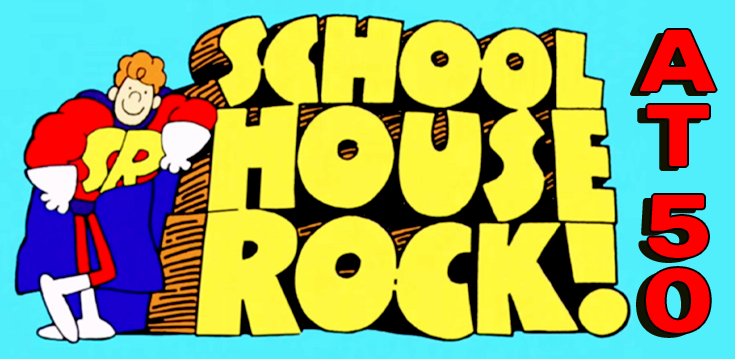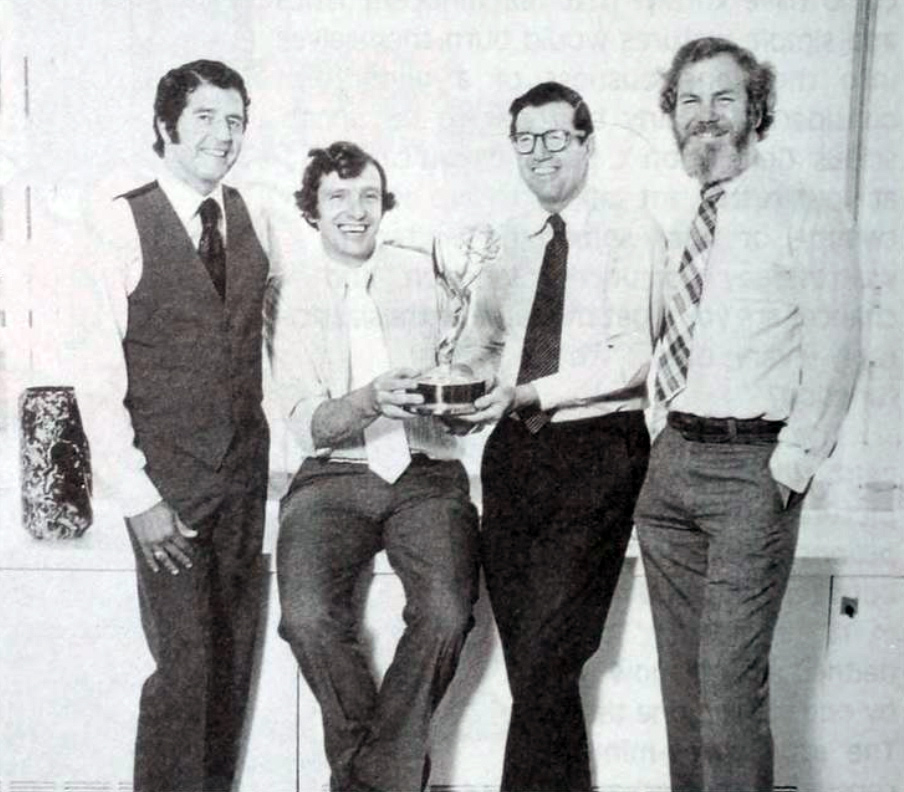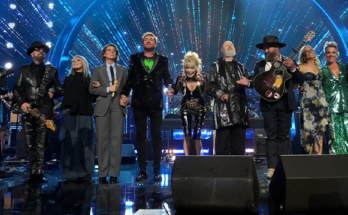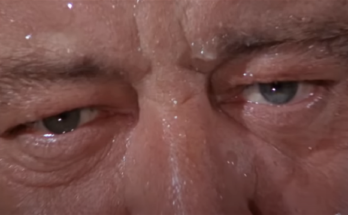
Americans now in their 50s grew up in a time of radical innovation at the intersection of public education and mass media. In the late 1960s, citizen groups such as Action for Children’s Television (ACT), concerned over kiddie TV shows that advertised toys, candy and high-sugar breakfast cereals, pressured Congress into establishing limits and guidelines to curb this phenomenon — in favor of more educational content during blocks of programming aimed at children.
The Public Broadcasting Service (PBS) went on-air in 1969, establishing a dynasty of revolutionary coast-to-coast children’s programming such as Sesame Street, Mister Rogers’ Neighborhood, The Electric Company, ZOOM, 3-2-1 Contact and other shows meant to teach not just reading, writing and arithmetic — but also science, critical thinking and social/emotional skills.
Commercial network television found itself under pressure, too. If advertising time during the lucrative Saturday morning cartoon block was limited, how were they going to make enough money to support the programming? The answer for ABC-TV, which was looking for something to counter CBS’s successful In the News segments for young viewers, practically fell into the lap of then-boss Michael Eisner (yes, the very same).
It seems a New York ad exec named David McCall, of McCaffrey & McCall, was frustrated with his young son’s inability to learn his multiplication tables, despite knowing all the words to the latest Hendrix and Stones singles. McCall was suddenly struck with an idea: Why couldn’t you weave math lessons into catchy pop tunes? He talked it over with staff copywriter George Newall, who loved the concept and immediately knew what to do. Newall phoned up jazz hipster Bob Dorough for help — and it must have been the most auspicious phone call of his life. Dorough, a pianist and singer who had played and recorded with everybody from Miles Davis to Sugar Ray Robinson to Lenny Bruce, took about two weeks to put together a song about multiplication — and the result was “Three is a Magic Number.”
Staff illustrator Tom Yohe, inspired by the simplicity and beauty of Dorough’s composition, assembled an art treatment for it, and they knew they had something special on their hands.
A colleague at ABC-TV urged the McCall team to pitch the idea as a series to Eisner, who flipped for it right away. Legendary cartoon director Chuck Jones was working on a children’s show called Curiosity Shop for the network, and when he saw the animated clip for “Three Is the Magic Number,” he lobbied to include it. The song first aired as part of a 1971 episode of Curiosity Shop, in an extended form that sadly never again saw the light of day. The positive reaction was enough to earn it the greenlight for one season from ABC.
And on January 6, 1973, “Three Is the Magic Number” debuted during the Eisner-produced ABC Saturday morning cartoon block, rubbing shoulders with episodes of The Jackson 5ive, The Osmonds, The Brady Kids and a rerun of H.R. Pufnstuf. For ten Saturdays in a row, a new Multiplication Rock short aired in this lineup, each covering a different number, most featuring Bob Dorough’s playful, cartoony Texas twang front and center.
There was “My Hero, Zero,” and the Noah’s Ark motif of “Elementary, My Dear,” covering multiples of two. “The Four-Legged Zoo,” sung by Dorough with a chorus of kids from ZOOM. One of the most memorable was “Ready or Not, Here I Come,” in which a game of hide-and-seek turns into a groovin’ speedrun through counting by fives. The super funky “I Got Six” and “Naughty Number Nine” both featured lead vocals by jazz legend Grady Tate. There was the fortunate rabbit in “Lucky Seven Sampson,” and Dorough’s old musical collaborator Blossom Dearie lent her distinct voice to the figure skating girl in the melancholic “Figure Eight.” “The Good Eleven” and “Little Twelvetoes” rounded out the season.
Schoolhouse Rock! was a hit with kids, parents, educators — and perhaps most importantly, advertisers. The network found itself in the enviable position of fulfilling its mandate to provide more educational programming during “children’s hours” while at the same time being allowed to sell the series to a corporate sponsor. General Foods might have been faced with new limitations on directly marketing their cereals to kids, but they could still put their name on Schoolhouse Rock!. Over the years other companies including Kellogg’s, Nabisco, McDonald’s and even Kenner Toys sponsored Schoolhouse Rock! and ABC’s two other series of educational animated shorts, Time for Timer and The Bod Squad.
A second series of seven shorts — Grammar Rock — was produced in short order and began airing in the fall 1973 lineup. This set of songs leaned much less on Dorough, though he wrote or co-wrote several of them and can be heard loud and clear on “Lolly, Lolly, Lolly, Get Your Adverbs Here.” Blossom Dearie returned to sing “Unpack Your Adjectives,” Zachary Sanders belted out the action-packed “Verb: That’s What’s Happening,” Lynn Ahrens contributed both “A Noun Is a Person, Place or Thing” and “Interjections!,” and most auspiciously, this season marked the debut of Merv Griffin band member Jack Sheldon, who lent his iconic voice to “Conjunction Junction” and “Rufus Xavier Sarsaparilla” (regarding the usefulness of pronouns).
The American Bicentennial in 1976 sparked a third season of Schoolhouse Rock! dedicated specifically to the history of the nation, known as America Rock. Lynn Ahrens wrote most of the songs, though she sang only “No More Kings” (illuminating the colonists’ break with King George III) and her musical transcription of “The Preamble” to the U.S. Constitution (the only reason most people my age have this text memorized). Her other compositions for season three included “Elbow Room” (on the Louisiana Purchase, sung by Sue Manchester), “Fireworks” (about the Declaration of Independence, sung by Grady Tate), and “Great American Melting Pot” (on how immigration made America great, sung by Lori Lieberman). Bob Dorough was back with “The Shot Heard ‘Round the World” (on the Revolutionary War), “Sufferin’ ’til Suffrage” (about the 19th Amendment, sung by Zappa cohort Essra Mohawk) and “Mother Necessity” (on American inventors, featuring vocals by Dorough, Dearie, Mohawk & Sheldon). And of course, who could forget Jack Sheldon’s legendary performance on “I’m Just a Bill,” written by Dave Frishberg?
Next came a season of Science Rock, touching on areas such as the human body (“The Body Machine,” “Do the Circulation,” the nervous system-themed “Telegraph Line” and “Them Not-So-Dry Bones“), energy (“Electricity” and “Energy Blues“), the solar system (“Interplanet Janet“), gravity (“A Victim of Gravity,” a 1950s pastiche nod to the then-popular Grease, featuring vocals by legendary doowop group The Tokens), and the controversial “Greatest Show on Earth,” an episode on weather which was censored and went long unaired due to the title’s infringing on a copyrighted trademark of the Ringling Brothers and Barnum & Bailey Circus. Of these nine final songs in the original run of Schoolhouse Rock!, Lynn Ahrens wrote six (and sang only one); Bob Dorough wrote “Electricity,” sung by Zachary Sanders, and George Newall contributed “Energy Blues” and “Bones,” both sung by Sheldon.
This concluded the classic body of Schoolhouse Rock! canon, but did not by any means spell the end of the project. A four-episode series called Scooter Computer & Mr. Chips was broadcast through the early 1980s, discussing the then-new world of home computers. But due to the rapid turnover of computer technology, these clips stopped airing by the middle of the decade.
In the early 1990s, when many of the kids who grew up watching Schoolhouse Rock! were busy raising young children of their own, the show enjoyed a renaissance. Ahrens, Dorough and Sheldon teamed up again in 1993 to produce two new Grammar Rock entries — “Busy Prepositions” and “The Tale of Mr. Morton” (teaching about sentence structure) — and a whole new season was commissioned. The resulting eight episodes of Money Rock, teaching about economics and personal finance, aired from 1994 to 1996, once again drawing upon the same talent pool.
Also in 1993, a Broadway-style “jukebox musical” called Schoolhouse Rock Live! opened in Chicago. An off-Broadway production followed, and multiple tours, and the show continues to be produced today.
1996 saw Atlantic Records (under its Lava imprint) release a 15-track tribute album titled Schoolhouse Rock! Rocks, with some of the day’s hippest artists — Pavement, Ween, Daniel Johnston, Chavez, Folk Implosion and others — covering classic songs from the series. (Blind Melon’s hippie jam take on “Magic Number” would sadly be one of the very last recordings made by singer Shannon Hoon before his untimely death.) The album, which also acted as a fundraiser for the Children’s Defense Fund, charted at number 70 on the Billboard 200.
In support of Rock the Vote, a nonprofit organization dedicated to increasing political awareness among the youth, Dorough recruited veterans Tate and Mohawk — along with Isaac Hayes, Etta James, John Popper of Blues Traveler, the Sugarhill Gang, the Roots, Joan Osborne and others for the 1998 Rhino Records release Schoolhouse Rocks the Vote! This album featured six covers from the classic catalog and four new compositions.
2002 saw Newall, Dorough and Sheldon reunite to produce a new short on the electoral college for the 30th anniversary special edition home video release on VHS and DVD formats. Disney, which by that time owned the franchise, commissioned a whole new series called Earth Rock, focusing on environmental issues. These 12 songs and their accompanying animated videos, again from the same core creative team, were issued on home video but not aired on network television.
David McCall, who first had the idea of putting math lessons into pop songs, died along with his wife Penny in a car accident in Albania in 1999, while doing volunteer work in aid of Kosovar refugees. Tom Yohe, longtime Schoolhouse Rock! art director, died of pancreatic cancer in 2000. Radford Stone, who first envisioned pitching the project as a TV series and later became its producer, passed in 2017. Bob Dorough and Jack Sheldon left us in 2018 and 2019, respectively, and just last month, in December 2022, George Newall — the last of the original crew behind Schoolhouse Rock! — died at the age of 88.

These folks and all the other writers, composers, musicians, singers and animators that worked on this project over the years cannot have possibly known in the beginning the depth of the impact they would have on my entire generation, trickling down even now through the Millennials to Gen Z and beyond. Along with everybody at Children’s Television Workshop (not to mention the producers of and performers on the TV special and record album Free to Be You and Me), the Schoolhouse Rock! team ably demonstrated the power of music to get and keep the attention of young people — just long enough to teach them something they will never forget for the rest of their lives.
Tonight after dinner I am going to sit down with my boys, now 11 and 7, and watch some of my favorite old Schoolhouse Rock! episodes. Even though I own the 30th anniversary DVD box set, I don’t even have to pull out the hardware — as almost every episode is available right now to stream from Disney+. And I have the satisfaction of knowing that even 50 years later, the math, the grammar and the science are all still exactly the same — and the tunes are 100% just as catchy as ever.



